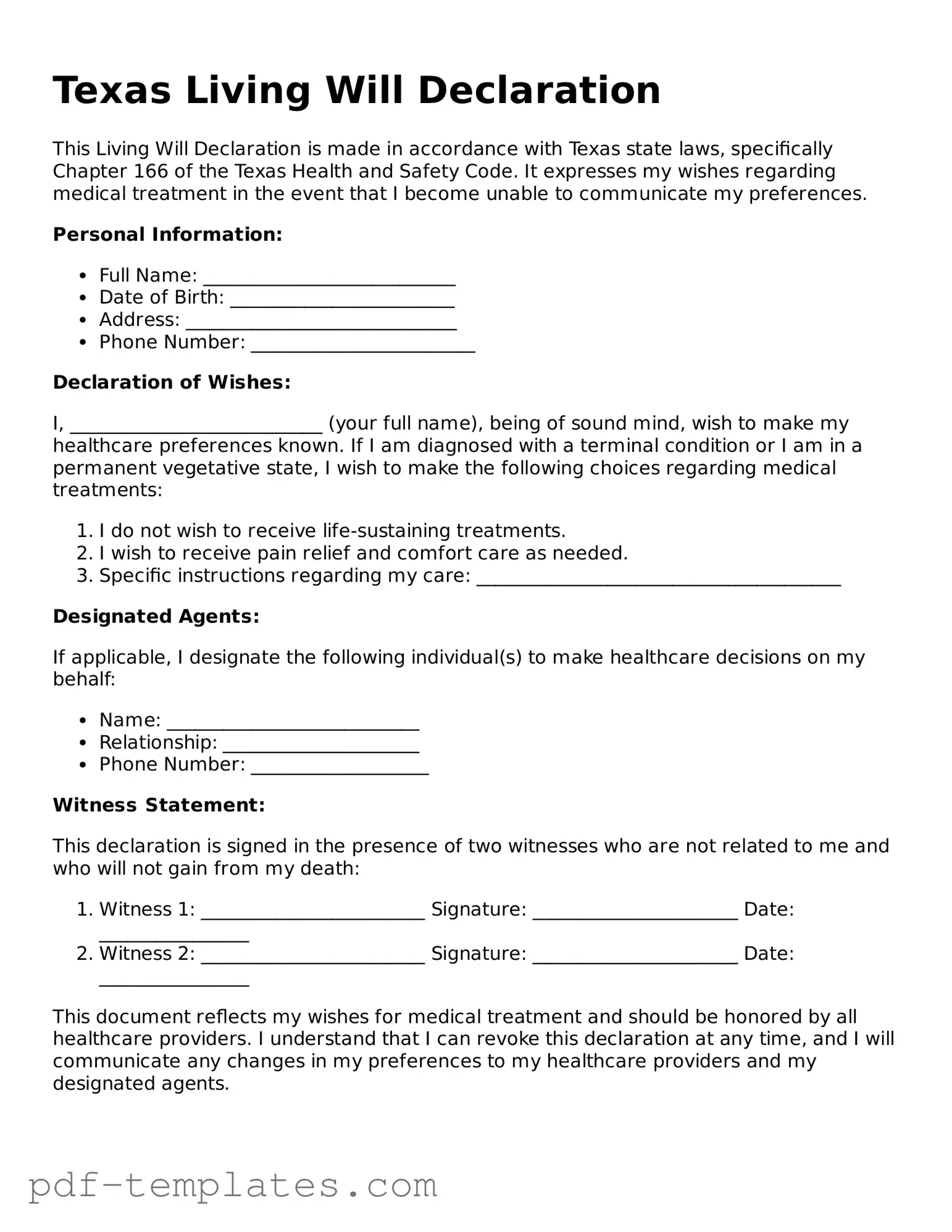In Texas, a Living Will serves as a crucial document for individuals wishing to outline their medical preferences in the event they are unable to communicate their wishes due to illness or incapacity. This legal form allows you to specify your desires regarding life-sustaining treatments and interventions, ensuring that your healthcare aligns with your values and beliefs. By completing a Living Will, you can make decisions about the use of artificial nutrition and hydration, resuscitation efforts, and other critical medical procedures. This empowers you to take control of your healthcare choices, even when you may not be able to express them. Additionally, the Texas Living Will form is straightforward and designed to be easily understood, making it accessible for anyone looking to safeguard their medical decisions. It is essential to discuss your wishes with family members and healthcare providers, as this can foster understanding and support during challenging times. Ultimately, a Living Will not only provides clarity for your loved ones but also ensures that your preferences are honored, reflecting your personal values in a time of need.
